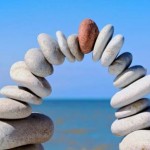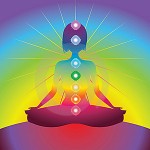 Balanced people, art and nature are all attractive and seem to possess a force that draws you in. It’s the ultimate harmony that is at the core of balance and that is also the essence of pure pleasure and joy.
Balanced people, art and nature are all attractive and seem to possess a force that draws you in. It’s the ultimate harmony that is at the core of balance and that is also the essence of pure pleasure and joy.
What do we need to create Balance?
Strength
There are three important locations in the body, which are crucial for balance. All these locations need strength. As babies, we first learned to balance our heads (about 6 weeks) then we learn to balance our waist (about 6 months) and finally our ankles (about 1 year). As we age the process is reversed.
Grounding
Without a steady base it is impossible to balance. To be grounded and to be aware of your own energetic connection to the earth is a prerequisite to be balanced physically. For mental balance, is it helpful to be aware of the grounding principals that determine a harmonious coexistence of mankind and nature as a whole.
Flexibility
Flexibility is our ability to adjust to change physically as well as mentally. Without flexibility our body becomes rigid and unable to adjust to the forces of gravity when we change the positions. Without mental flexibility we cannot understand other points of view, we lose perspective and insight.
Ener gy
gy
Balance is energetically located at the core of our body, at manipura chakra. This is where our mental energy meets the physical energy in the body. These two apparently opposing forces not only drive us forward they are also responsible for our balance, mentally and physically. Without movement our brain doesn’t function optimally and without our mind our bodies have no direction.
Insight through detachment
Finding balance is an objective practice. Once you are mentally ‘detached’ from your pose on the mat you can tune in to the opposing energetic forces at work and then you are open to that lovely moment of balance. This moment is hard to describe, but comes in the vicinity of wonder, stillness, delight or joy.
Also mentally, when we detach ourselves from the thoughts we are thinking and rise above them to see the bigger picture we get snippets of insight. These moments of mental balance have the same sense of epiphany, wonder and understanding.

Balance is to know where you are on the pendulum’s swing of opposites:
between starting and stopping
between day and night
between inhalation and exhalation
between black and white
between action and reflection
In conclusion I would like to revisit the basic principle of hatha yoga, which is the physical path of yoga. Its literal meaning is the ‘union’ (yoga) of ‘ha’ (sun) and ‘tha’ (moon). The sun and moon reflect the opposite qualities within ourselves. The Sun represents our active side and the Moon our reflective side. So the practice of Hatha yoga is about combining or balancing action and reflection, body and mind, trying hard and letting go.
On a final note: To find balance in time is to truly experience that delicious moment between past and future – the present, where we feel liberated from the worries for the future and the burdens from the past.
